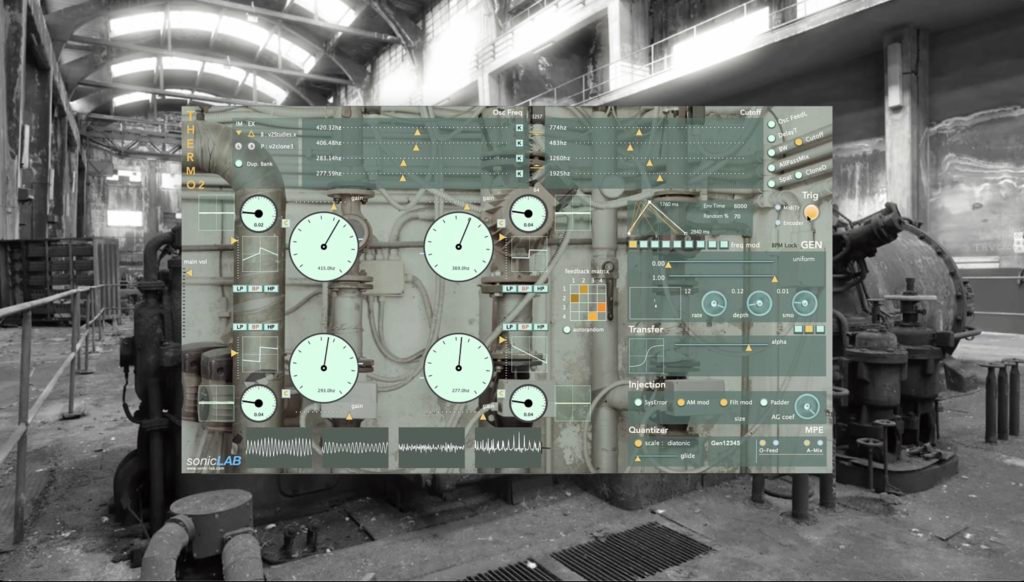The Science of Neural, Interpersonal Communication
At the SoNIC Lab, we explore the most fundamental aspect of the human experience: our connection to others. Led by Dr. Elise A. Piazza at the University of Rochester’s Department of Brain and Cognitive Sciences, we investigate the intricate dance of brains and behaviors that unfolds during real-life communication.
Our mission is to understand how we align with one another, how our brains process the rich statistics of sound, and how these mechanisms support everything from a baby’s first words to a musician’s masterful performance. Using a naturalistic, integrative approach, we aim to decode the science of connection.
About the Investigator
Dr. Elise A. Piazza is an Assistant Professor of Brain and Cognitive Sciences at the University of Rochester. Her work is dedicated to understanding the complex dynamics of human communication through a unique, naturalistic lens.
Before joining the University of Rochester, Dr. Piazza was a C. V. Starr postdoctoral fellow at the Princeton Neuroscience Institute, where she worked closely with leading researchers Uri Hasson and Casey Lew-Williams. This postdoctoral work laid the foundation for her current research program, focusing on interpersonal neural coupling and communication development.

Academic Journey:
- Ph.D., Vision Science (2015): University of California, Berkeley
- B.A., Psychology (2009): Williams College
Dr. Piazza’s approach is distinguished by its emphasis on real-world interactions. By simultaneously measuring the brain activity and behaviors of multiple individuals as they speak, listen, learn, and create music together, her research moves beyond the traditional laboratory setting to capture the essence of how we connect. Her findings have been published in top-tier journals, including Psychological Science, Current Biology, and Scientific American, and her innovative work has been recognized with prestigious grants, including a GRAMMY Museum® Grant.
Our Research Focus: Decoding Communication
The SoNIC Lab is driven by a set of core questions that strike at the heart of human interaction. We use cutting-edge methods, including functional magnetic resonance imaging (fMRI), functional near-infrared spectroscopy (fNIRS), detailed behavioral analysis, and computational modeling to find the answers.
1. How do our brains and behaviors become coupled during everyday interactions?
Human communication is not a one-way street; it’s a dynamic, interactive process of alignment. We investigate the phenomenon of neural coupling, where the brain activity of a listener begins to mirror the brain activity of a speaker. This interpersonal synchrony is a powerful biomarker of successful communication.
Our research in this area explores:
- Predicting Learning Outcomes: We have demonstrated that the degree of neural synchrony between children and adults can predict how well a child learns novel words from a story. This suggests that when brains are “on the same wavelength,” information transfer is more effective.
- The Adult-Infant Dyad: Communication begins in infancy. We study how infants’ and adults’ brains become coupled during natural interactions, like reading a book or playing together. This work, featured in Psychological Science, reveals that brain-to-brain coupling is present from our earliest stages of life and is intricately linked to moment-to-moment social cues like eye contact and vocal pitch.
- A Framework for Connection: We aim to build a comprehensive framework where interpersonal synchrony is understood as a fundamental mechanism supporting not just simple comprehension, but also learning, empathy, and even shared creativity.

2. How do our brains organize the statistics of natural sounds?
The world is a symphony of complex sounds, from the nuanced melody of speech to the rich harmonies of music. Our brains are remarkably adept at transforming this continuous stream of information into concise, meaningful representations. We want to understand how this is accomplished.
Our research in this area focuses on:
- The Building Blocks of Perception: We investigate how listeners perceive and adapt to the fundamental qualities of sound, such as timbre (the unique “color” or quality of a sound). Our work has shown that the brain rapidly adapts to the timbre of natural sounds, creating efficient neural codes that allow us to process auditory information with incredible speed.
- Summary Statistics in Audition: Rather than processing every single detail, the brain often relies on “summary statistics” to get the gist of a sensory experience. We’ve shown that humans use this mechanism to perceive auditory sequences, providing an efficient way to understand complex patterns without getting lost in the details.
- Music, Production, and Perception: We study how the brains of expert musicians organize the complex statistics of music, both when they listen and when they perform. This research, supported by a GRAMMY Museum® Grant, uses naturalistic paradigms to explore how temporal information is processed hierarchically during music production and perception, offering a window into the neural basis of musical expertise.
3. How do we adapt our voices to the demands of unique listeners?
Every speaker has a unique vocal “fingerprint,” a characteristic pattern of pitch, rhythm, and timbre. Yet, we are not static communicators. We fluidly adapt our voices to suit our audience and our communicative goals. This vocal adaptability is a cornerstone of effective interaction.
Our research in this area examines:

- The “Motherese” Phenomenon: One of the most striking examples of vocal adaptation is the way mothers speak to their infants. Our research published in Current Biology revealed that mothers don’t just use a generic “baby talk”; they consistently and reliably alter their own unique vocal fingerprints when communicating with their infants. This “timbre code-switching” creates a specialized, acoustically salient signal tailored for the developing brain.
- Driving Attention and Learning: We delve into the moment-to-moment dynamics of child-directed speech. Our work using pupillometry has shown how the dynamic pitch contours of a caregiver’s voice can actively shape a toddler’s attention and, consequently, their ability to learn new words. This demonstrates a direct link between a speaker’s vocal adaptation and a listener’s cognitive processes.
- Vocal Adaptation Beyond Infancy: While parent-infant communication is a primary model, the principles of vocal adaptation apply across the lifespan. We are interested in how speakers adjust their vocal styles in various contexts, from teaching in a classroom to conversing with different social partners.
News & Updates from the SoNIC Lab
November 2022: Dr. Piazza delivered an invited talk at the Symposium for Cognitive Auditory Neuroscience (SCAN) on the theme of “auditory-motor synchronization in the context of speech and music”.
September 2022: Our lab is growing! We are actively recruiting passionate and curious individuals to join our team. Prospective PhD students and postdoctoral researchers are encouraged to visit our “Join Us” page for more information.
September 2022: Dr. Piazza was featured in a new article in The Atlantic discussing the profound cognitive and emotional benefits of singing to infants.
August 2022: PhD student Riesa Cassano presented her fantastic poster, “Hierarchical processing of naturalistic music during production and perception,” at the Society for Music Perception and Cognition (SMPC) meeting.
July 2022: PhD student Ruby Zeng gave an exciting flash talk, “Using a language transformer model to capture creativity in improvised narratives,” at the 44th Annual Meeting of the Cognitive Science Society (CogSci).
June 2022: Our research on brain-to-brain coupling in adults and children was featured in a special issue of Scientific American!
May 2022: PhD student Ruby Zeng presented her innovative work on creativity and language models at the Society for Neuroscience of Creativity meeting.
Join Us: Become a Part of the SoNIC Lab
Are you passionate about understanding the science behind human connection? Are you curious about how brains process speech and music, and how we adapt to one another in real time?
The SoNIC Lab is seeking motivated and collaborative researchers to join our team. We welcome applications from prospective PhD students and postdoctoral fellows with backgrounds in cognitive science, neuroscience, psychology, computer science, data science, and related fields.
We are looking for individuals who are excited by our naturalistic, interdisciplinary approach and who are eager to tackle big questions about the mind and brain. Our lab provides a supportive, intellectually stimulating environment with access to state-of-the-art facilities and mentorship.
Our commitment is to open and rigorous science. Below is a selection of our peer-reviewed work.
Piazza, E. A., Hasenfratz, L., Hasson, U., & Lew-Williams, C. (2020). Infant and adult brains are coupled to the dynamics of natural communication. Psychological Science, 31, 6-17.
Summary: This foundational study used fNIRS to simultaneously record brain activity from infants and an adult during a natural communication paradigm. We found that infant and adult brains showed significant neural coupling, and that this coupling was driven by the dynamics of their social interaction, including mutual gaze. This provides the first evidence for brain-to-brain coupling in the developing human brain during natural communication.
[Featured Publication 2]
Piazza, E. A., Iordan, M. C., & Lew-Williams, C. (2017). Mothers consistently alter their unique vocal fingerprints when communicating with infants. Current Biology, 27, 3162-3167.
Summary: We analyzed the acoustic properties of mothers’ speech when they spoke to their infants versus when they spoke to other adults. Using machine learning, we discovered that mothers from diverse language backgrounds consistently and reliably shifted their vocal timbre—their unique vocal “fingerprint”—to create a special communicative signal for their infants, a phenomenon we term timbre code-switching.
Piazza, E. A., Cohen, A., Trach, J., & Lew-Williams, C. (2021). Neural synchrony predicts children’s learning of novel words. Cognition, 214, 104752.
Summary: In this study, we investigated the link between brain-to-brain synchrony and learning. We found that the degree of neural coupling between a child and an adult storyteller directly predicted the child’s ability to learn new words from the story. This highlights neural synchrony as a key mechanism that supports successful pedagogical outcomes.
Preprints/Under review
- Piazza, E. A., Iordan, M. C., Williams, J., & Hasson, U. (In prep). The neural mechanisms of natural music production and learning.
- Piazza, E. A., Iordan, M. C., Williams, J.*, & Hasson, U. (In prep). The impact of preprocessing parameters on inter-subject reliability in naturalistic fMRI paradigms. *Equal contribution.
Peer-reviewed publications
- Piazza, E. A., Nencheva, M., & Lew-Williams, C. (2021). The development of communication across timescales. Current Directions in Psychological Science, 30, 459-467.
- Piazza, E. A., Cohen, A., Trach, J., & Lew-Williams, C. (2021). Neural synchrony predicts children’s learning of novel words. Cognition, 214, 104752.
- Nencheva, M., Piazza, E. A., & Lew-Williams, C. (2020). The moment-to-moment pitch dynamics of child-directed speech shape toddlers’ attention and learning.
- Piazza, E. A., Hasenfratz, L., Hasson, U., & Lew-Williams, C. (2020). Infant and adult brains are coupled to the dynamics of natural communication. Psychological Science, 31, 6-17
- Piazza, E. A., Theunissen, F. E., Wessel, D., & Whitney, D. (2018). Rapid adaptation to the timbre of natural sounds. Scientific Reports, 8, 13826.
- Piazza, E. A., Iordan, M. C., & Lew-Williams, C. (2017). Mothers consistently alter their unique vocal fingerprints when communicating with infants. Current Biology, 27, 3162-3167.
- Liu, Y., Piazza, E. A., Simony, E., Shewokis, P., Onaral, B., Hasson, U., & Ayaz, H. (2017). Measuring speaker-listener neural coupling with functional near-infrared spectroscopy. Scientific Reports, 7, 43293.
- … [continue with the rest of the publication list in the same format] …
Contact Us
The SoNIC Lab
Department of Brain and Cognitive Sciences
University of Rochester
Rochester, NY
Principal Investigator:
Elise A. Piazza, PhD
elise.piazza@rochester.edu